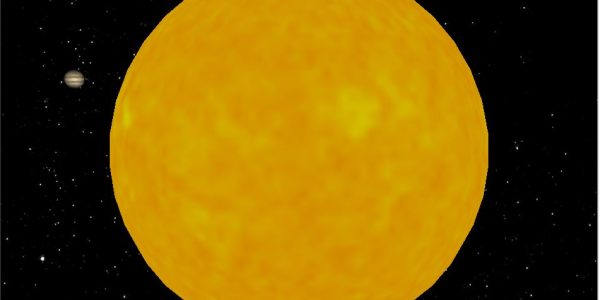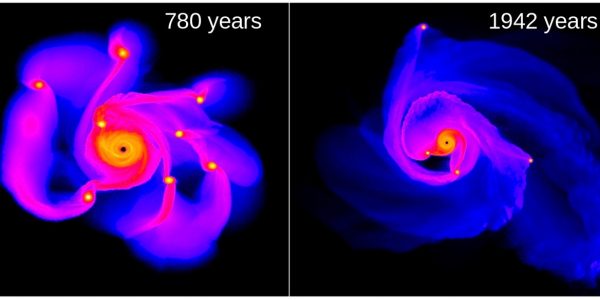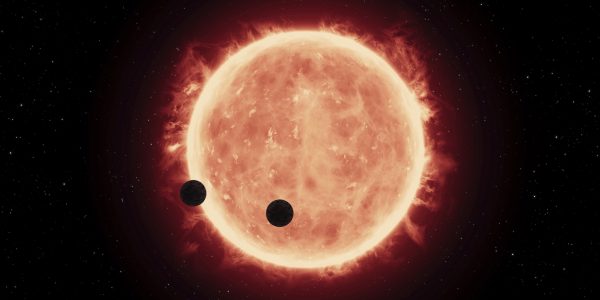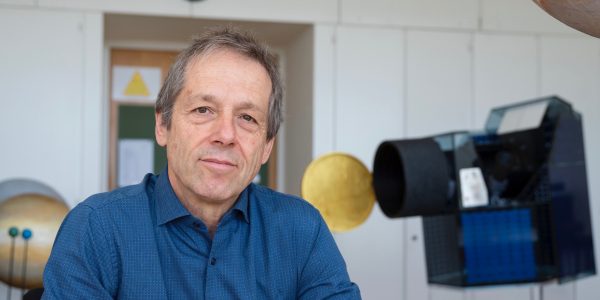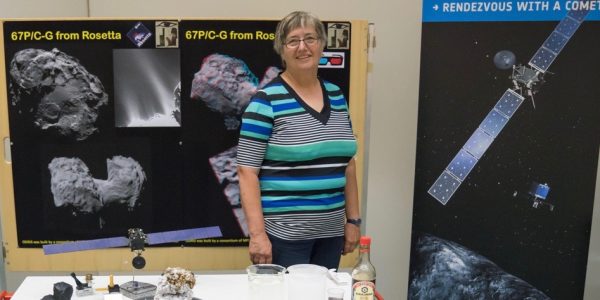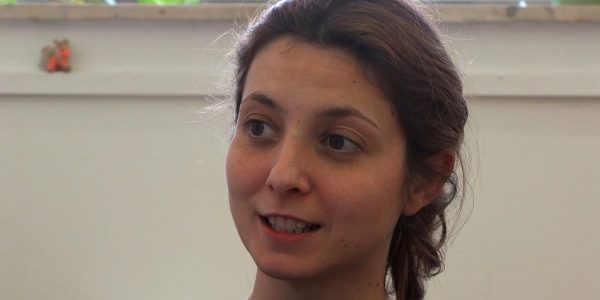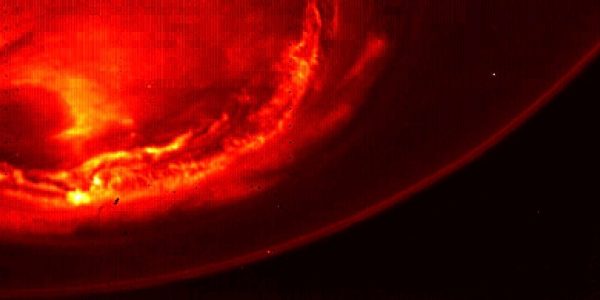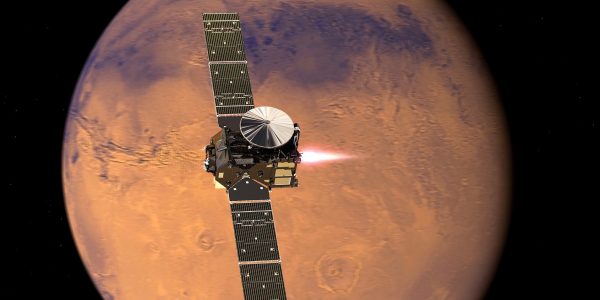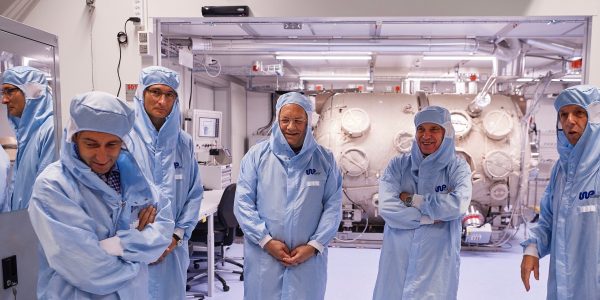News
Kepler-60
Kepler-60 is a system about 2200 light-years away in the constellation Lyra. It is made of a star a bit larger than the Sun (1.1 solar masses and 1.5 solar radii) and at least three planets. This system is peculiar since the three planets seems to be close to a Laplace-like resonance. Indeed, when the central planet (Kepler-60 c) revolves 4 times around the […]
Continue ReadingHow planets like Jupiter form
Young giant planets are born from gas and dust. Researchers of ETH Zürich and the Universities of Zürich and Bern simulated different scenarios relying on the computing power of the Swiss National Supercomputing Centre (CSCS) to find out how they exactly form and evolve. They compared their results with observations and were able to show […]
Continue ReadingPreferentially Earth-sized planets with lots of water
Computer simulations by astrophysicists at the University of Bern of the formation of planets orbiting in the habitable zone of low mass stars such as Proxima Centauri show that these planets are most likely to be roughly the size of the Earth and to contain large amounts of water. In August 2016, the announcement of […]
Continue Reading“Rosetta found an interesting place to die”
At the University of Bern about 300 guests and the Swiss media followed the end of the spacecraft Rosetta that was manoeuvred to crash on comet Churyumov-Gerasimenko. University of Bern, 30 September 2016, 13:17 CEST: In a big lecture hall filled to capacity the researchers and speakers Nicolas Thomas and Martin Rubin are getting nervous. […]
Continue ReadingProxima Centauri b
Dear Reader, The discovery of Proxima Centauri b is nothing short of extraordinary: A planet with a mass that appears similar to that of the Earth is orbiting in the habitable zone of our nearest star! We could not have hoped for anything better! The star is sufficiently close that within the next decade instruments […]
Continue Reading“It was the most exciting mission”
On Friday 30 September 2016 the European spacecraft Rosetta will crash into the comet Churyumov-Gerasimenko. Aboard the Rosetta spacecraft is the instrument ROSINA, which was developed by Physics Professor Kathrin Altwegg and her team at the University of Bern. PlanetS: You will lose an instrument that you have grown very fond of – it has […]
Continue ReadingUnderstanding Giant Planet Formation
Ravit Helled occupies an office in the buildings of the Irchel campus, University of Zurich, Y11 building. She is with her son who is just a few weeks old, “although I could have been in the event organized by NASA for the arrival of Juno at Jupiter I could not go there, since I was […]
Continue ReadingAmazing Images of Jupiter
According to Scott Bolton, principal investigator of Juno from the Southwest Research Institute in San Antonio the north pole of Jupiter looks like nothing seen or imagined before. It’s bluer in color up there than other parts of the planet, and there are a lot of storms. Clouds have shadows, possibly indicating that the clouds are at a higher altitude […]
Continue ReadingArriving at Mars
On 19 October 2016, the spacecraft Trace Gas Orbiter (TGO) of the European ExoMars mission will manoeuvre into Mars orbit. On board is a camera built at the University of Bern, the Colour and Stereo Surface Imaging System CaSSIS. In the video Principal Investigator Nicolas Thomas explains what will happen after the arrival at Mars. […]
Continue ReadingSwiss Government in the Clean Room
To kick of their annual “school trip” in summer 2016 all seven members of the Swiss Federal Council visited the University of Bern. The professors Willy Benz, Kathrin Altwegg and Nicolas Thomas presented their space projects: the space telescope CHEOPS, the Rosetta spectrometer ROSINA-RTOF and the mars camera CaSSIS. For entering the CHEOPS laboratory the […]
Continue Reading
